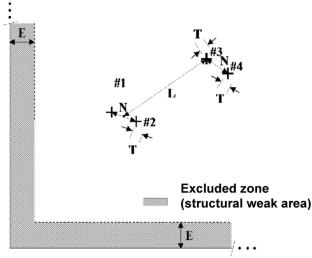An Add-On Armor Design Against 7.62 mm × 51 Armor-Piercing Tungsten Carbide Core Ammunition for Armored Vehicles and Examination of the Ballistic Performance of the Armor
Abstract
An add-on armor was designed against 7.62 mm × 51 armor-piercing (AP) tungsten carbide (WC) core ammunition. The ballistic performance of the armor was investigated both experimentally and numerically. Cylindrical alumina (Al2O3) ceramics were used in the armor panel between two polymer matrix composites (fiberglass/thermoset plates) on the front side. In order to simulate the structural body of the vehicle in the design, the add-on armor panel was attached to MIL-DTL 46100 500 HB armor steel with high-strength bolts. The exit velocities of the projectile, the kinetic energy change of the projectile after passing through the ceramic layer (before penetrating the armor steel, which simulates the hull structure of an armored vehicle) and the stress–strain distribution of the armor panel after penetration were calculated by numerical analysis. The data obtained from the numerical analysis was used to evaluate the effect of ceramic thickness and armor performance on achieving the optimum design weight. After 24 shots were fired on the prepared armor panel with dimensions of 500 × 500 mm according to NATO STANAG 4569 (AEP-55 Volume1), the armor system successfully defeated 7.62 mm × 51 AP WC core ammunition, demonstrating its effectiveness and desired damage mechanisms (the fragmentation of the projectile core by the ceramic, the absorption of a significant portion of its energy, and the reduction of deformation transferred to the base armor).


 求助内容:
求助内容: 应助结果提醒方式:
应助结果提醒方式:


